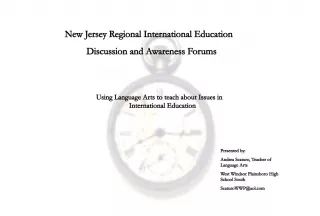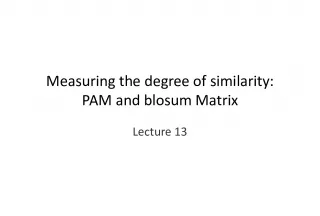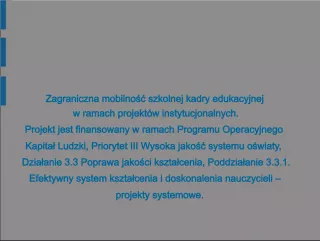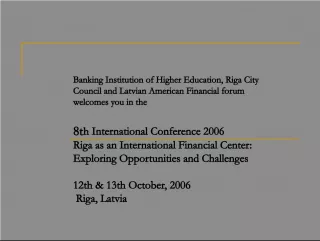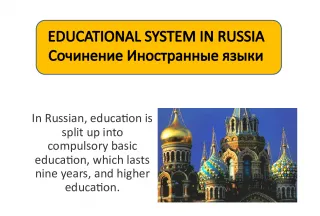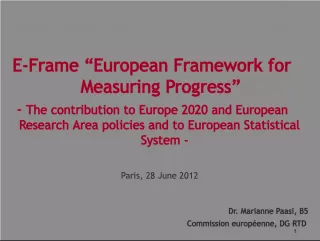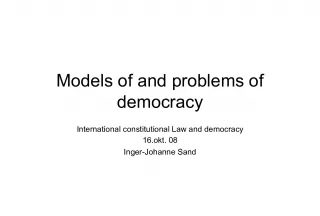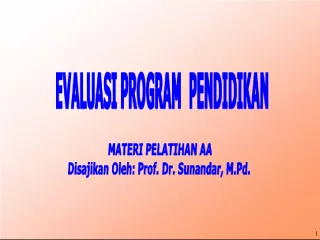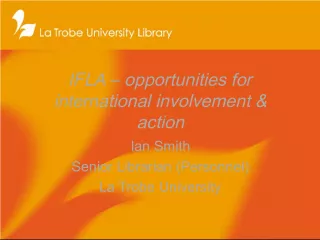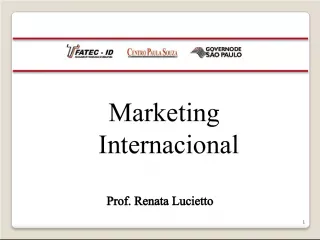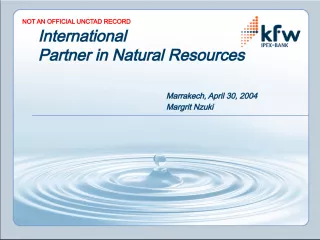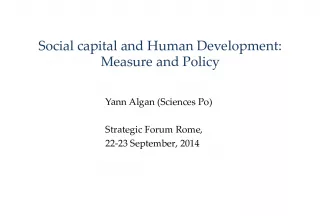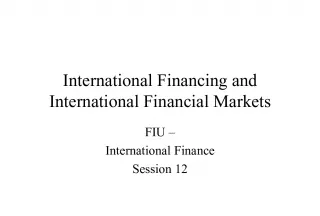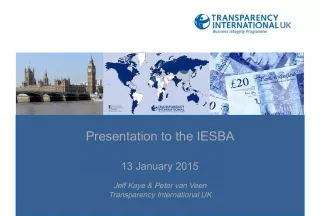Measuring and Nurturing International Mindedness in Education


This article explores the definition and manifestation of international mindedness, and provides strategies for nurturing and assessing it in students. It also discusses the importance of using assessment data to improve education, social, and health outcomes.
- Uploaded on | 3 Views
-
 geraldtorres
geraldtorres
About Measuring and Nurturing International Mindedness in Education
PowerPoint presentation about 'Measuring and Nurturing International Mindedness in Education'. This presentation describes the topic on This article explores the definition and manifestation of international mindedness, and provides strategies for nurturing and assessing it in students. It also discusses the importance of using assessment data to improve education, social, and health outcomes.. The key topics included in this slideshow are . Download this presentation absolutely free.
Presentation Transcript
1. Evaluating and measuring international-mindedness Dr. Richard Harwood / CEM / Durham University
2. CEM • Assessment • Ability, attainment, attitudes • Reporting – Baseline – Predictions – Progress • Evidence for education, social and health outcomes
3. International-mindedness • definition of ‘international-mindedness’ [‘global consciousness’] • How can it be communicated? • How does it manifest itself and develop as students mature? • How can it be nurtured and assessed?
4. Internationalism Mission-driven Vision-led Student Learning and Well- being Capturing and assessing international-mindedness
5. Capturing and assessing international-mindedness
6. Moving Beyond the ‘Five Fs’ Fashion Flags Festivals Food Fieldtrips Capturing and assessing international-mindedness
7. Capturing and assessing international-mindedness iS Journal Vol. XXX, No. 1 Nov. 2010 Looking beneath the tip of the iceberg: cultural intelligence in international education
8. Chapter on the ‘Art of Failure’ ‘Choking’ and ‘Panicking’ intrinsic and extrinsic learning Capturing and assessing international-mindedness
9. • Explore the notion of what it means to be a ‘good national and international citizen’ – origins – danger of ‘cultural colonialism’ • Need to consider a broader and deeper definition of culture than traditional/conventional views of culture defined by nationality, geography and history. • Distinction between ‘awareness’ and ‘attitude’ – awareness can function entirely at a cognitive level, whereas attitude conveys a sense of action that stems from the affective domain and includes commitment.
10. A possible definition: International-mindedness (global consciousness) is a person’s capacity to transcend the limits of a worldview informed by a single experience of nationality, creed, culture or philosophy and recognise in the richness of diversity a multiplicity of ways of engaging with the world
11. Profiling ‘international-mindedness’ The framework, given the working title of ‘Me and My World’, covers the five areas (or strands) represented as shown:
12. World Views This strand explores the way students think of (and interact with) their peers, the local community, their host country and the wider world. It encourages awareness of cultural and ethnic diversity, tolerance and acceptance. • Awareness of different religions worldviews and their impact on society • Consideration of different political ideals and systems • Multiculturalism, cosmopolitanism, citizenship and nationality • Migration and political asylum – impact on home communities • ‘First nationals’ and ethnicity Capturing and assessing international-mindedness
13. matrix of the types of evidence evidence that could contribute to the evaluation and help draw up the ‘surveys’
14. Levels of relevance Content from different areas – e.g. Islam Syllabuses used School – philosophy, delivery, accreditation Personal – student development, tutoring Curriculum – exemplars used in courses
15. Reporting International Mindedness • Measures for your own students • How does everyone else in the sample respond? • How do my students’ measures compare? • Are my students’ results significant?
16. Your school’s percentage The total sample’s percentage The colour of the bar indicates significance
17. Measure the impact of an International Mindedness Intervention • Measure your students’ attitudes (baseline chart) • Carry out the intervention • After a suitable period of time, re-measure your students’ attitudes (progress chart) • Look for changes in responses and note significance Can help you to: • Know what works • Apply for funding • Fulfil aims of mission statement • Meet accreditation criteria
18. Pre-Intervention Baseline Post Intervention Intervention
19. Charts can be split by (for example): • Gender • Culture • Home Country • British Council Schools • Native Language
20. Capturing and assessing international-mindedness rickharwood@btinternet.com Kate.Bailey@cem.dur.ac.uk


